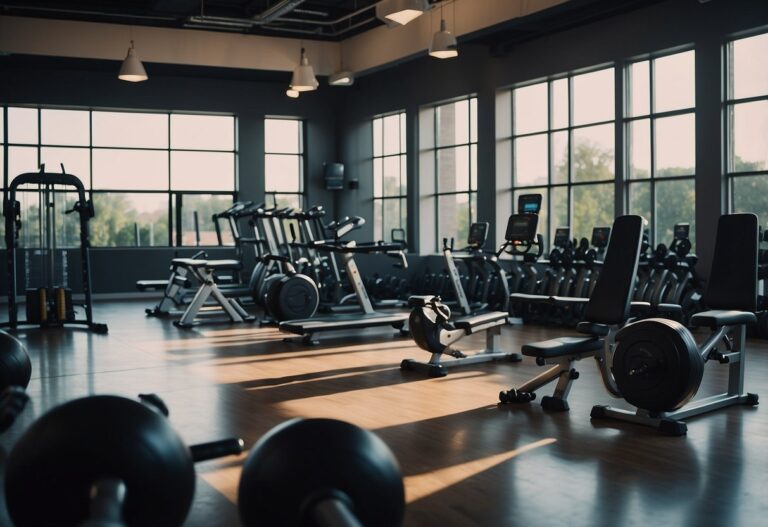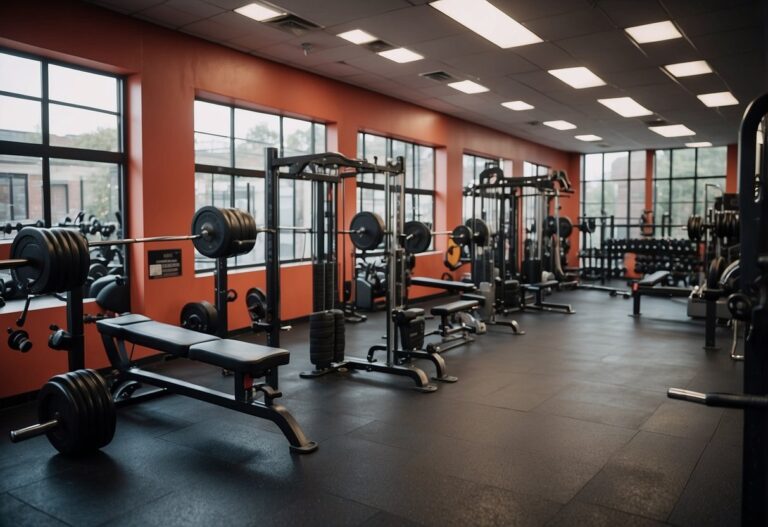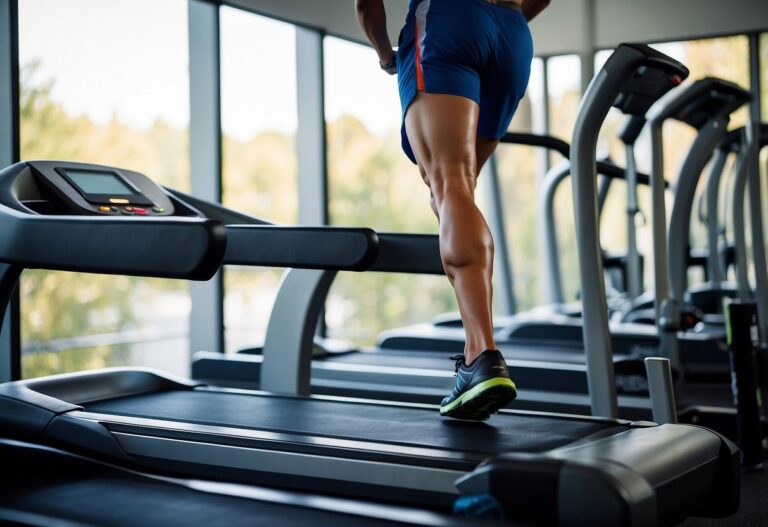Jumping rope is an excellent way to get in shape and boost your cardiovascular health. It’s a fun and effective workout that you can do almost anywhere, whether at home, in the park, or even on holiday. The best part is that you don’t need fancy equipment—just a good quality rope and a bit of space. Have you ever wondered how to start a jump rope workout and stick with it?

If you’re a beginner, starting a jump rope routine can seem a bit daunting. Don’t worry, though; it’s easier than it looks and incredibly rewarding. By following some simple tips and tricks, you can quickly master the basics and enjoy the many benefits of this exercise. So, what are some essential tips that can help you jump rope like a pro?
Start with a Warm-up
Before you begin your jump rope workout, start with a warm-up. A good warm-up gets your muscles ready and helps to avoid injuries.
Begin with five minutes of light cardio. You can jog on the spot, do jumping jacks, or go for a brisk walk. This gets your heart rate up and blood flowing.
Next, perform dynamic stretches. Stretch your arms, legs, and back. Arm circles, leg swings, and torso twists are great choices. Stretching ensures your muscles are flexible and ready for the jump rope workout.
Remember, warming up is essential. It prepares your body and improves your overall performance.
For a more detailed guide, you can refer to this 12 Minute Beginner Jump Rope Workout.
Use a Properly Sized Rope
Choosing a properly sized rope is crucial for a successful jump rope workout.
To find the right size, stand on the middle of the rope. The handles should reach your armpits when pulled up.
Using a rope that’s too long or too short can make jumping awkward and increase the risk of tripping.
If needed, you can easily adjust most ropes to fit your height. This ensures smoother swings and better control.
Remember, a well-sized rope makes your workout more enjoyable and effective. For more details, you can check out this guide.
Keep Your Hands Close to Your Hips
When jumping rope, keep your hands close to your hips. This helps control the rope better and keeps it from hitting your feet.
Keep your palms facing upward and ensure each hand is the same distance from your hips. This consistent positioning helps maintain a steady rhythm.
It’s also helpful to tuck your elbows slightly to your sides. This way, you use wrist movements to guide the rope, which is more efficient. By following these tips, you can improve your jump rope technique and avoid unnecessary mistakes.
Jump on the Balls of Your Feet

When you start jumping rope, make sure to jump on the balls of your feet. This helps you maintain balance and reduce impact.
Think of your feet as shock absorbers. Landing on the balls of your feet eases the stress on your knees and ankles.
Focus on keeping your heels off the ground. This will also help you stay light on your feet, making the exercise more efficient.
Try to jump just high enough for the rope to pass under your feet. This saves energy and keeps your jumps smooth and controlled.
Practice makes perfect. With time, jumping on the balls of your feet will become second nature.
Practice Basic Jump Techniques
When starting with jump rope workouts, it’s key to get the basics right. Begin by mastering the basic jump. Keep your feet close together and hop just high enough for the rope to pass underneath. Maintain a steady rhythm.
Next, try the single-leg jump. Alternate hopping on one foot, which improves your balance and coordination. Ensure your wrists are turning the rope, not your arms.
Finally, experiment with the alternating foot jump. This involves jogging in place while turning the rope. It’s a bit trickier but great for increasing your endurance.
Count Your Jumps

Keeping track of your jumps is a great way to see your progress over time. It helps you stay motivated as you improve.
Start by counting how many jumps you can do in a row without stopping. This gives you a baseline to measure against.
Use a digital counter or an app to assist you. These tools can track your jumps and keep a record of your best sessions.
Counting jumps also makes your workout more engaging. Aim to beat your previous record, pushing yourself a little more each time you jump.
Increase Speed Gradually

When you’re starting out with jump rope, it’s important to increase your speed gradually. This helps you build coordination and prevents injury.
First, focus on getting your form right. Start slow and steady.
As you get comfortable, aim to pick up the pace. You might begin with short bursts of faster jumps, then return to your normal speed.
Another method is to use a timer. Spend 30 seconds jumping at a regular pace, then 10 seconds faster.
This way, your body adapts progressively, improving both your speed and endurance.
Remember, consistency is key. Stick with it!
Mix in Different Jump Styles

Switching up your jump rope styles can keep your workouts exciting and more effective.
You could start with a basic two-foot jump. It’s easy and a great way to warm up. Once you’re comfortable, try the single-leg jump. This helps improve your balance and coordination.
Next, add in the alternating single-leg jump. This involves jumping on one leg and then switching to the other. It keeps your routine dynamic and engaging.
If you’re looking for a challenge, you might try incorporating mountain climbers. They blend well with jump rope exercises for a high-intensity workout.
By mixing these different jump styles, you can keep your workout fun and beneficial. Settings goals for how many jumps or how long you can go can also add to the challenge.
Use a Timer for Intervals
When you’re starting out with jump rope exercises, using a timer is very helpful. It keeps you on track and makes sure your workout is effective.
Try timing your intervals with a simple app on your phone. Set it for intervals like 20 seconds of jumping, followed by 10 seconds of rest.
Using a timer also helps you stay consistent. You won’t have to guess when to stop or start. This can make your workout smoother and help build endurance.
Focus on Breathing
When you’re jumping rope, breathing properly is crucial. It ensures that your body gets enough oxygen to keep going. Start by trying to breathe in through your nose and out through your mouth. This pattern helps regulate your breathing.
It’s common to forget about breathing while concentrating on jumping. Practise conscious breathing by taking even and steady breaths. Pay attention to how your breaths sync with your jumps.
You might find it helpful to count in your head. For example, breathe in for three jumps and out for three jumps. This can make it easier to maintain a consistent pattern.
As you get better, your breathing will become more natural. Just remember, relaxed and rhythmic breathing can improve your endurance and make your workout more enjoyable.
Understanding The Basics
When starting your jump rope workout, it’s crucial to focus on getting the fundamentals right. From the length of the rope to the type of surface you’re working out on, these basics can significantly impact your experience and effectiveness.
Proper Jump Rope Length
Ensuring your jump rope is the correct length is key for a smooth workout. Stand on the middle of the rope and pull the handles up along your sides. The ends of the handles should reach your armpits. If they don’t, your rope is either too long or too short.
A rope that’s too long will tangle and slow you down. A short rope can trip you up. Adjustable ropes are a great option as they allow you to tweak the length as needed until you find the perfect fit. Remember, the right rope length helps you maintain good form and improves your workout efficiency.
Choosing The Right Surface
The surface you jump on affects both your performance and your joints. Hard surfaces like concrete can be tough on your joints, increasing the risk of injury. Softer surfaces, such as gym mats, grass, or wooden floors, are much better choices. They provide cushioning and reduce the impact on your legs.
Avoid surfaces that are too soft, though, like sand, as they can make jumping difficult and tiring. Real-world examples show many beginners prefer gym mats or wooden floors, which offer a balance between firmness and cushioning. Jumping on these surfaces can help you practice longer and stay injury-free.
Perfecting Your Technique

Getting the jump rope technique right is key to effective and enjoyable workouts. Focus on finding your rhythm and proper hand and wrist positioning to make your jumps smoother and more efficient.
Finding Your Rhythm
Starting with a consistent rhythm sets the foundation for a successful jump rope session. Begin with slow, steady jumps to find a pace that you can maintain comfortably. It’s helpful to count your jumps or set a timer to keep track.
Listening to music with a steady beat can help you keep pace. Choose songs with a rhythm that matches your jumping speed. This way, you can synchronise your movements with the beat, making it easier to stay in rhythm.
A common beginner mistake is jumping too high. Aim to barely clear the rope with each jump. This will reduce fatigue and allow you to sustain the exercise longer. Keep your jumps low and light, using the balls of your feet for a quick bounce.
Practising in front of a mirror can help you monitor and adjust your form. Watching yourself jump will allow you to spot any inconsistencies in your rhythm and correct them promptly. Focus on a smooth, continuous motion, avoiding any unnecessary pauses or hitches.
Hand And Wrist Positioning
Proper hand and wrist positioning is crucial for effective jump rope technique. Hold the handles firmly but not too tight. Your wrists should do most of the work, guiding the rope’s motion with small, controlled movements.
Keep your hands slightly in front of your hips, with your elbows close to your body. This positioning helps maintain balance and prevents the rope from tangling. Make sure your wrists are rotating in a circular motion to keep the rope moving consistently.
Avoid using your shoulders or upper arms to swing the rope, as this can cause fatigue and reduce efficiency. The power should come from your wrists, with your hands moving in small circles. This technique allows for better control and smoother jumps.
Maintaining symmetry is important. Ensure both hands move in unison and are equally distanced from your body. Uneven hands can cause the rope to hit your feet or tangle, disrupting your rhythm. Regular practice will help develop muscle memory, making the correct positioning feel natural.
Avoiding Common Mistakes
Jump rope workouts are fun and effective but can be less beneficial if common mistakes aren’t avoided. Paying attention to rope length and maintaining proper posture will help you get the most out of your workout.
Incorrect Rope Length
An improper rope length can make jumping difficult. If your rope is too long, it can drag on the ground and cause you to trip. If it’s too short, you might constantly hit your feet. To get the right length, stand on the middle of the rope and pull the handles up toward your armpits. The ends of the rope should reach around your armpits.
Adjustable ropes are a good choice because you can tweak them as needed. Beginners often find it helpful to start with a longer rope and gradually shorten it as they become more comfortable. Ensuring your rope is the correct length helps in maintaining a smooth, consistent rhythm in your jumps.
Poor Posture And Form
Incorrect posture can lead to fatigue and even injury. Beginners often make the mistake of using their arms and shoulders too much rather than their wrists to turn the rope. Keep your elbows close to your body and use your wrists to spin the rope. Your arms should stay relaxed and move naturally.
Maintain a slight bend in your knees and keep your core engaged to help with balance. Another common mistake is jumping too high, which wastes energy. Aim for small, controlled jumps just a few centimetres off the ground. Watching yourself in a mirror or recording your jumps can help you spot and correct these errors. Proper form ensures you’re maximising the benefits of your jump rope workout.







